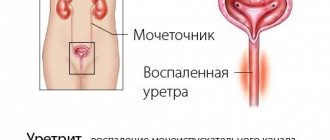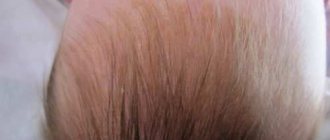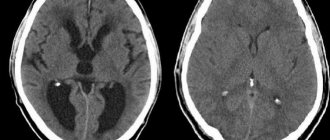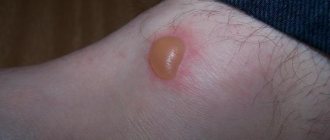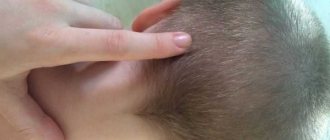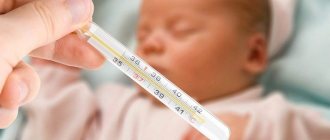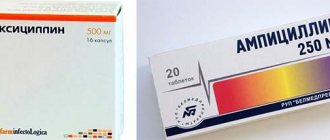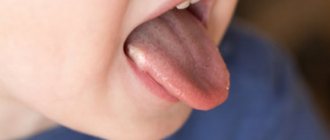Location of lymph nodes on the back of the head
There are about 600 lymph nodes in the human body. They are scattered throughout the body. All lymph nodes, regardless of their location, perform the same functions. The organ acts as a barrier to pathogenic microorganisms, preventing their penetration into the body. In the lymph nodes, foreign particles, microbes and tumor cells are retained, which enter with the lymph flow. The organ produces immunoglobulin and lymphocytes. Additionally, it has a stimulating effect on the proliferation of blood cells. Lymph nodes take part in the digestion process, the exchange of fats, proteins and carbohydrates, as well as vitamins.
The occipital lymph nodes are located on the back of the human body at the border of the head and neck. The vessels are located on the back surface of the head. Normally, the size of lymph nodes is 5-10 mm. The occipital lymph nodes cannot be palpated. Outwardly they are also invisible. Pressing the area does not cause painful reactions. You can only see the inflamed lymph node. It is a lump under the skin, the size of which usually exceeds 1 cm. To get a better idea of what the occipital lymph node looks like in a child, it is worth looking at the photo.
Lymph nodes on the head of a child: causes of inflammation in the back of the head
Endocrinologist of the highest category Anna Valerievna
40492
Update date: May 2020
Lymph nodes on a child’s head (lymphadenopathy) are lymphoid organs that belong to the lymphatic system and perform the function of a biological filter.
Their increase on the back of the head may indicate both malignant and benign neoplasms. In children, enlarged occipital lymph nodes most often indicate an infectious disease. Treatment methods for enlarged ones depend on the causative disease.
In the International Classification of Diseases, 10th revision (ICD-10), lymphadenopathy is designated by code R59.0.
Features of the lymph nodes on the head of a child
Lymph nodes are organs of the lymphatic system that play an important role in the immune system. Lymphatic organs are divided into primary and secondary. Red bone marrow and thymus belong to the primary ones. Lymph nodes, spleen, tonsils and lymphoid follicles are secondary lymphoid organs.
Enlarged lymph nodes are evidence of the body's fight against infection
Lymph nodes are hemispherical organs, their diameter is about 1 centimeter. Each of them is surrounded by a connective tissue capsule and has several lower lymphatic vessels.
The lymph node contains lymphoid follicles about 1 millimeter in size. They accumulate so-called lymphocytes - a subset of leukocytes (white blood cells).
Follicular cells are mainly responsible for the proliferation of lymphocytes.
Anatomy and physiology
The occipital lymph nodes are located at the back of the neck and collect lymph from ducts that run to the brain or along the scalp. They perform different functions: the main task is lymph filtration. Malignant cells and harmful substances are filtered and destroyed in the lymph nodes.
When the human body comes into contact with an antigen, lymphocytes are increasingly produced in the lymph nodes. Antigens are substances in the environment to which the immune system produces antibodies. These, in turn, are used by immune cells to recognize pathogens.
In addition to antibodies, some lymphocyte receptors bind to antigens.
In addition to producing lymphocytes, lymph nodes are also major targets of phagocytotic activity. Phagocytosis is the process of absorption of foreign substances by a cell. In this way, foreign matter, microorganisms and other harmful cells can be rendered harmless by phagocytes.
Lymphocytes are produced in the lymph nodes as well as in all other lymphatic organs. In addition to B and T lymphocytes, guard cells are also activated and stored in lymphoid nodes.
Normal sizes
The average size of the lymph nodes on the back of the head varies from 1 to 2 centimeters. Enlargement of the occipital lymph nodes (more than 2 cm) indicates a pathological process. In this case, you must immediately consult a doctor.
Reason to visit the doctor
Enlarged occipital lymph nodes can be caused by respiratory tract infections or viral diseases - Pfeiffer glandular fever. Doctors speak in this case of so-called reactive lymphadenopathy. It can be very painful.
Measles infection can cause swollen lymph nodes in a child
Cancer cells can also form metastases in the lymph nodes. Hodgkin's disease and non-Hodgkin's lymphoma are malignant tumors that directly affect the lymph nodes.
Hodgkin's lymphoma is a malignancy of lymphoid tissue that, in addition to painful swelling, can lead to night sweats, unwanted weight loss, and unexplained fever. Currently, Hodgkin's lymphoma is highly treatable even in advanced stages.
Non-Hodgkin's lymphoma is the term for all cancers of the lymphatic system other than Hodgkin's disease. The diseases that are grouped under this name are very different, so the treatment methods differ. Non-Hodgkin's lymphomas can also be treated with high effectiveness with chemotherapy and radiotherapy.
Generalized enlargement of lymph nodes
Generalized lymphadenopathy is an enlargement of more than two unrelated groups of lymph nodes. Physical examination and medical history are important to establish the diagnosis. The cause of massive enlargement of lymph nodes on the head of a child can be infections, autoimmune diseases, malignant neoplasms, histiocytosis, benign hyperplasia and drug reactions.
Viral causes:
- Infectious mononucleosis (Epstein-Barr virus).
- Cytomegalovirus, chickenpox and adenovirus.
- Human immunodeficiency virus (HIV). Children with HIV are also at increased risk of developing tuberculosis.
Bacterial infections in most cases cause enlargement of only one specific lymph node. However, some diseases can also lead to enlarged lymph node groups: typhoid fever, syphilis, bubonic plague and tuberculosis. Less common bacteria, including those that cause endocarditis, also lead to generalized lymphadenopathy.
Malignant diseases are often accompanied by fever, decreased appetite, nonspecific pain, weight loss, and night sweats. Acute leukemia and lymphoma are often accompanied by the above symptoms.
Only 1/3 of children with Hodgkin's disease and 10% with non-Hodgkin's lymphoma have enlarged lymph nodes.
According to many doctors, malignant neoplasms in the lymph nodes have a solid consistency and are fused with the surrounding tissues. However, this conclusion can sometimes be misleading.
Some enlarged lymph nodes may be benign due to fibrous changes that make them hard.
Lymphadenopathy is an important manifestation of diseases associated with impaired lipid storage. In Niemann-Pick disease, sphingomyelin and other lipids accumulate in the spleen, liver, lymph nodes, and central nervous system.
In Gaucher disease, accumulation of glucosylceramide leads to enlargement of the spleen, lymph nodes and bone marrow.
Although lymphadenopathy occurs in patients, additional symptoms such as hepatosplenomegaly and developmental delay in children are usually present.
Side effects of various medications can also cause lymphadenopathy.
Within a few weeks of phenytoin use, some patients experience a syndrome of regional or generalized enlarged lymph nodes, followed by a severe maculopapular rash, fever, hepatosplenomegaly, jaundice, and anemia.
Symptoms disappear approximately 2-3 months after stopping the drug. Other medications that can cause similar symptoms include Mephenytoin, Pyrimethamine, Phenylbutazone, Allopurinol and Isoniazid.
In rare cases, juvenile rheumatoid arthritis is accompanied by enlarged lymph nodes in the acute stage. Sarcoidosis and transplant rejection by the host's immune system also cause massive enlargement of lymph nodes.
Local enlargement of lymph nodes
Acute unilateral cervical lymphadenopathy is associated with staphylococcal or streptococcal infection
Regional lymphadenopathy is an enlargement of one or more adjacent lymph nodes. A child's lymph nodes are unevenly distributed throughout the body: most are located on the head and neck. Each group filters lymph from a specific area of the body.
Cervical lymphadenopathy is a common problem in children. Cervical lymph nodes filter lymph from the tongue, cheek, outer ear, parotid gland, larynx, thyroid gland and trachea. Inflammation or direct infection of these areas causes subsequent hyperplasia of various groups of lymph nodes.
Enlargement of the occipital lymph nodes in a young child is a common feature of many viral infections. Infectious mononucleosis often manifests as posterior and anterior cervical lymphadenopathy. Hard nodes that have a reddish color characterize this pathology. Other viral causes of cervical lymphadenopathy include adenovirus, herpes virus, coxsackievirus, and cytomegalovirus.
Bacterial infection often leads to enlarged lymph nodes. Often children experience pain in the back of the head and slight redness. Atypical mycobacteria also cause subacute inflammation of the lymph nodes in a child’s head.
Malignant tumors develop in the head and neck area in ¼ of patients. In the first 6 years of life, neuroblastoma, leukemia, non-Hodgkin's lymphoma and rhabdomyosarcoma (in descending order of prevalence) are the most common cancers in the head and neck region.
In children over 6 years of age, Hodgkin's disease and non-Hodgkin's lymphoma are most common. In children with Hodgkin's disease, cervical lymphadenopathy is present in 80-90% of cases, and in children with non-Hodgkin's lymphoma - in 40%. Kawasaki disease is an important cause of enlarged lymph nodes.
It is not uncommon for an infant to have a fever for at least 5 days.
The occipital nodes are palpable in 5% of healthy children. Common causes of nuchal lymphadenopathy include seborrheic dermatitis, insect bites, orbital cellulitis, and head lice. Viral causes include rubella and roseola syphilitica.
How to treat inflammation of the lymph nodes?
The treatment regimen depends on the underlying cause of lymphadenitis. For infectious diseases, drug therapy is primarily aimed at relieving symptoms and preventing complications. For cancer, radiotherapy and chemotherapy are prescribed.
For bacterial lymphadenopathy, antibiotics are used taking into account the sensitivity of the microorganism
For acute lymphadenitis, the following drugs are prescribed:
- Analgesics and antipyretics – Ibuprofen or Paracetamol.
- Antibiotics.
Antibiotics can shorten the duration of the disease and reduce the risk of complications. Recurrent acute lymphadenitis can also be treated with analgesics or antibiotics.
However, treatment with antibiotics can also cause serious side effects: allergic reactions (including anaphylactic shock), fungal infections and gastrointestinal disorders.
With frequent antibiotic therapy, many bacterial pathogens become resistant to the drugs. Increasing antibiotic resistance complicates the treatment of infectious diseases.
You should not take medications for viral or fungal diseases, since in these cases they are ineffective.
Source: https://limfouzel.ru/limfouzly/limfouzly-na-golove-u-rebenka/
Causes of inflammation of the occipital lymph nodes
Enlarged lymph nodes are called lymphadenitis. It can be specific and non-specific. Depending on the type of problem, the diseases that cause it may differ. Nonspecific lymphadenitis appears due to the fact that the source of infection is in close proximity to the lymph nodes. In this case, it is worth talking about the flow of chronic processes in the body, the list of which includes:
- trophic ulcers;
- caries;
- otitis;
- pharyngitis;
- angina;
- phlegmon.
Specific lymphadenitis usually provokes severe infectious diseases. It can appear against the background of measles, tuberculosis or mononucleosis. Leukemia can also lead to inflammation of the occipital lymph nodes. The appearance of lymphadenitis may indicate that the child has developed an allergic reaction. Decreased immunity can also provoke an increase in the volume of the occipital lymph nodes. In some categories of patients, a similar phenomenon is observed during the terminal stages of cancer.
If a child under the age of 5 years has an enlarged occipital lymph node, this may indicate the development of pathological processes in the respiratory tract. By using filters, the body begins to fight the inflammatory process. In this case, the main symptoms of the disease may be absent. The most dangerous period for the occurrence of pathology is considered to be between 5 and 7 years of age. In older children, the risk of suppuration is reduced by 50%.
A scratch on the neck or other damage to the skin can also cause an increase in the volume of the lymph nodes. Through wounds, an infection enters the bloodstream, which affects the natural protective filters in the immediate vicinity.
The development of caries often leads to an increase in the size of the lymph nodes on the back of the head. If your child has lumps on the back of his head and neck, it is recommended to examine his mouth. Most often, this problem occurs among schoolchildren. Abuse of sweets contributes to the progression of caries.
Why does this happen, reasons
Lymph nodes on a child's head often become inflamed. The reasons may vary. All of them can be divided into infectious and non-infectious. To determine the exact cause, you should contact your pediatrician, get tested and undergo the necessary examination.
Infectious diseases
Infectious processes caused by common childhood diseases lead to inflammation of the lymph node on the child’s head:
- Measles. This disease directly affects the lymph nodes. The virus multiplies inside them.
- Rubella. The virus is captured by the lymph flow and enters the nodes. A sign of rubella is inflammation of adjacent groups of lymph nodes.
- Mumps (mumps). The cause of inflammation of the lymph nodes on the head is rare, but still occurs. Its cause is a violation of the movement of lymph in the inflamed salivary gland.
- Mononucleosis. Inflammation is caused by the penetration of the Epstein-Barr virus.
- Chicken pox. Chickenpox is a type of herpes. With chickenpox in children, the occipital lymph nodes on the head become inflamed.
But the most common cause of lymphadenitis is severe hypothermia during long walks. Being outdoors is very beneficial for children. But parents should make sure that the baby’s clothes are appropriate for the weather; they need to encourage activity during walks: outdoor games, jogging, sports.
Lymphadenopathy in the back of the head may indicate the development of an infection in the oral cavity. With a lack of fluoride and calcium in children, even in very young air, teeth deteriorate greatly. Already weak tissues are destroyed. A cavity appears in the tooth in which bacteria accumulate. As a result, the development of purulent processes begins. This will also lead to lymphadenopathy.
If the lymph nodes in the back of the head are inflamed, there is no need to immediately assume the worst case scenario. You should independently analyze the baby’s condition:
- take the temperature;
- examine the skin;
- listen to complaints.
We recommend additional reading: Causes of enlargement, expansion and swelling of the ventricles of the brain in a newborn
This will help to make a correct conclusion about the cause of the pathology and the infection that stimulates it.
Immune diseases
Immune diseases include pathologies caused by impaired immunity. The essence of the disorder is that immune cells begin an attack on other cells of the body. There are quite a lot of such ailments. Some of them affect only individual organs, others – entire systems of human life. Among the immune diseases that people encounter most often are:
- Agammaglobulinemia. The disease is hereditary. With this pathology, severe immunodeficiency develops. It manifests itself in childhood, sometimes at 2-3 months of life. Its main symptom is relapses - diseases caused by bacterial infections (otitis, sinusitis, sepsis and others) reappear. If this happens, you should contact an immunologist and do a blood test for the presence of serum immunoglabulins.
- Allergic rhinosinusopathy. This is a common allergic disease. It affects the mucous membranes of various parts of the nose. Breathing becomes difficult and is accompanied by headaches. The child suffers from frequent sneezing. The pathology is seasonal, but manifests itself strictly individually: for some in the spring during the flowering period of plants, for others in the summer during intense heat, and for others in the winter from the cold.
- Antiphospholipid syndrome is an immune pathology. During its development, antibodies to lipids, which are the basis of cell membranes, are formed in the body. Symptoms of the disease depend on many reasons. These may be thrombosis, increased blood pressure, temperature fluctuations, and skin damage.
- Autoimmune polyglandular syndrome is a pathology of the endocrine system, which is accompanied by insufficiency of the adrenal glands, thyroid gland, and pancreas.
All immune diseases lead to the manifestation of this symptom - inflammation of the lymph nodes on the head. HIV is a disease that affects the entire human immune system. Its distinguishing feature is multiple inflammation of the lymph nodes
Other, more common causes of lymphadenitis are a simple decrease in immunity, which occurs due to a lack of vitamins, overload, and hypothermia. This is especially true for older children. They often like to show off without wearing a hat. This leads to cooling of the scalp tissues and inflammation in the head region.
Tumor diseases
Oncological diseases that can lead to inflammation of the lymph nodes on the head of a child include:
- Lymphoma. Under this name lies a whole group of pathologies of the lymphatic system. This malignant process affects the cells of the lymph nodes, destroying them. Manifested by fever, weakness, skin rash and itching.
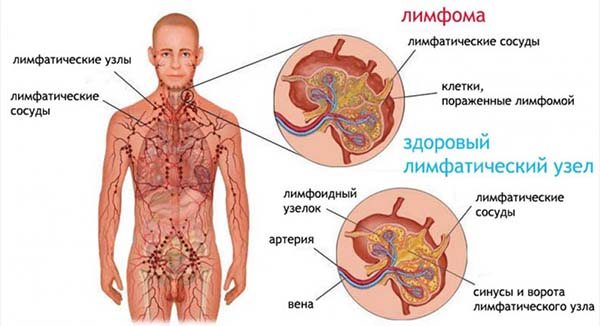
- Leukemia. This is a malignant disease of the hematopoietic system. Children have enlarged lymph nodes and suffer from headaches and joint pain. A constant feeling of fatigue and drowsiness is one of the first manifestations of the disease.
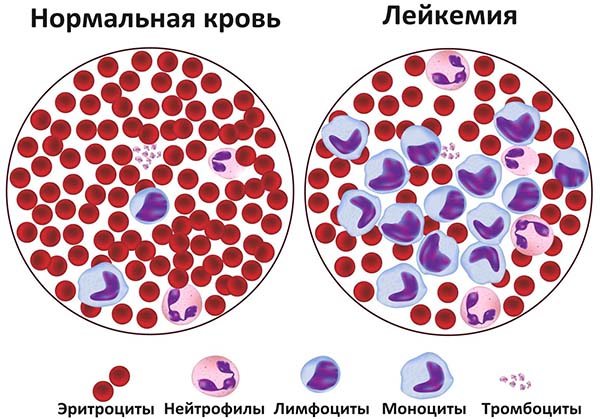
Individual features of the structure and location of lymph nodes
The individual structural features of lymph nodes begin with their shape. Lymph nodes are round, oval and bean-shaped. The size is also individual. It ranges from one to five centimeters. They are located in groups. There may be several of them in one group, or maybe several dozen. Lymph nodes on the head are no exception. They are also individual for each baby.
Symptoms of the disease in a child
If a child has inflamed occipital lymph nodes, bumps appear on the back of the head and neck. Palpation can cause severe pain. Unpleasant sensations in a child can occur without pressure on a tense lymph node. This indicates the course of an acute process. The skin does not change its appearance. However, a local increase in temperature may be observed. Lymph nodes may enlarge on 1 or 2 sides. Often the process of swelling of the lymph nodes is accompanied by additional symptoms, the list of which includes:
- The child has an increase in general body temperature. He suffers from chills and fever.
- There are signs of intoxication. The patient may refuse to eat and feel nauseated. Dizziness is often present.
- The area around the lymph nodes turns red and feels loose to the touch. The person feels throbbing pain. Upon palpation, a characteristic crunching sound may be heard, which is reminiscent of walking in the snow on a frosty morning. All of the above symptoms indicate the presence of suppuration.
Inflammation of the lymph nodes can occur without additional symptoms. In this case, bumps appear on the baby's neck or back of the head. There are no additional symptoms. Palpation may not cause discomfort. This may indicate problems with nearby organs or previous infection.
It must be borne in mind that inflammation of the lymph nodes is not an independent disease. It always occurs against the background of other pathologies. To bring the lymph nodes back to normal, it is necessary to eliminate the underlying disease that causes their enlargement.
Symptoms of inflammation of the lymph nodes on the head
Inflammation of the lymph nodes on the head and neck is manifested by severe symptoms:
- increase in size;
- pain on palpation and turning the head;
- redness of the skin in the area of the inflamed node;
- fever (in some cases);
- signs of intoxication of the body;
- general malaise.
In some cases, lymphadenitis develops, which has more acute manifestations.
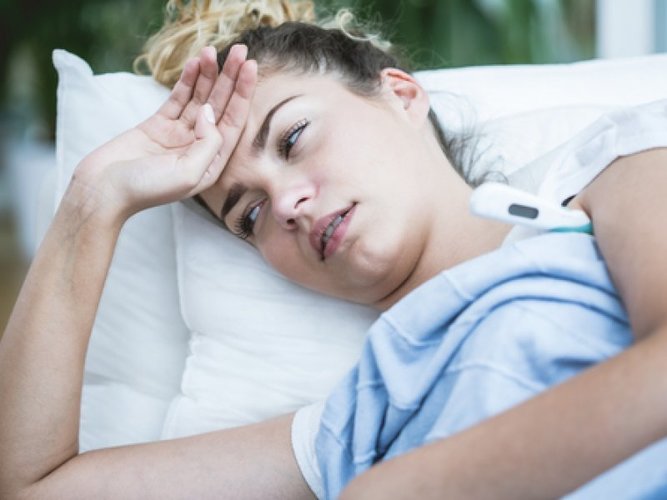
Namely:
- sharp or throbbing pain in the lymph node area;
- presence of high temperature (38-39C);
- formation of a purulent focus in the area where the node is located;
- Strong headache;
- with inflammation of the occipital or submandibular nodes - restriction in neck movement.
Possible complications
Lack of timely treatment increases the risk of transition of the inflammatory process to generalized sepsis. If this happens, toxic substances and the infection itself will penetrate the blood. This will lead to viruses and bacteria entering all cells of the body. The process develops at lightning speed. Symptoms increase very quickly.
The occipital lymph nodes are very close to the brain. Over time, the infection can penetrate into its tissues, which can subsequently lead to the appearance of meningitis. This is a serious disease. It can lead to a whole list of consequences and even the death of the patient. Therefore, it is not worth delaying the treatment of the root cause that caused the enlargement of the child’s lymph nodes.
Particular attention should be paid to enlarged lymph nodes on the back of the head in young children, patients with immunodeficiency, and pregnant women. All of the above categories of people are particularly susceptible to any kind of infection and have restrictions on certain diagnostic procedures. The use of medications for these patients is also limited.
What is inflammation of the lymph nodes on the head
Inflammation of the lymph nodes is an enlargement of the lymph nodes due to an inflammatory process of a specific or nonspecific nature. Inflammation of the lymph nodes is the activation of the barrier function of the lymphatic system, which is aimed at limiting the spread of infection throughout the body.
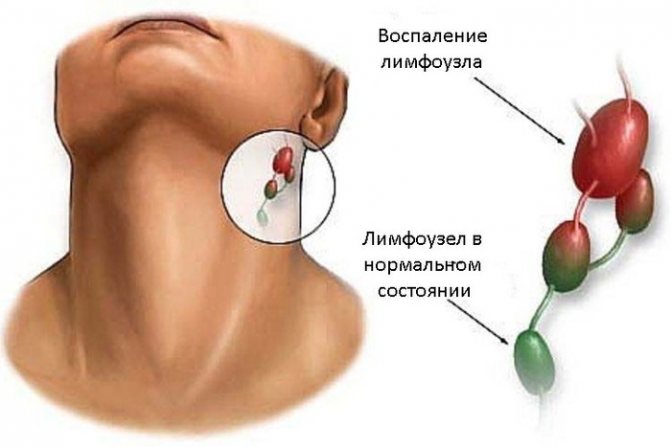
Lymph nodes enlarge due to diseases, or when infection penetrates into the lymph through damage to the skin. Infectious pathogens penetrate the lymph nodes through the outflow of lymphatic fluid, which follows from the lesion.
Diagnosis of the root cause
If your child has enlarged occipital lymph nodes, you should consult a therapist. Rapidly developing symptoms are a reason to immediately call an ambulance. First of all, the doctor will perform an examination. A history will then be taken. Based on the data obtained, a decision will be made to begin treatment or redirect the patient to another specialist. The therapist may prescribe a visit to an endocrinologist, ENT specialist, oncologist, surgeon, hematologist or infectious disease specialist. A highly specialized specialist will also conduct an examination and confirm or refute the preliminary diagnosis.
A general analysis of urine and blood is required. It allows you to get an idea of the state of the body as a whole and identify the presence of inflammation, as well as other pathogenic processes. Based on the data obtained, the doctor will be able to understand the reasons for the enlargement of the lymph nodes and make a preliminary diagnosis. Additional research will confirm or refute it. In addition to general tests, the composition of sputum is studied.
If there are no obvious causes of inflammation of the lymph nodes, an instrumental examination will be performed. If the presence of cancer developing in the chest is suspected, or tuberculosis has been ruled out, the patient will undergo X-ray control and fluorography.
If instrumental diagnostic methods do not help to understand the root cause, a lymph node biopsy may be prescribed. The contents are sent for research. Based on its results, further treatment will be prescribed.
Diagnostics
If your baby has lymphadenitis in the head area, you should first contact your pediatrician. General diagnosis of enlarged lymph nodes involves examination and a series of tests. The doctor visually examines the condition of the lymph nodes and palpates them. Those parents who have gone to the doctor with their child for various diseases know that the first step is always a general blood test. This analysis can be used to determine whether there is inflammation in the body and to what extent.
We recommend further reading: Causes of inflammation of the lymph node behind the ear in a child and what to do with the lump
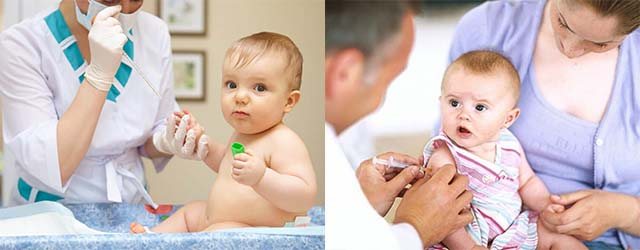
An indicator of inflammation is the number of leukocytes and the ROE reaction.
This is followed by urine and blood tests for glucogens. A urine test shows the presence of inflammatory processes in the genitourinary system. Excessive blood glucose levels are an indicator of many serious diseases. A biochemical blood test is evidence of the functioning of individual organs. If the doctor says that serological tests are necessary, then they need to be done. This is an important immunological test. It shows the presence of antibodies to infection in the blood. It can be used to determine whether the baby has any bacterial infections.
If cancer is suspected, the pediatrician prescribes a blood test for tumor markers. You should definitely go see it. The most clear picture of the tumor process will be provided by microwave resonance tomography. With this type of study, the condition of the internal organs and changes in them are clearly visible.
Treatment of enlarged lymph nodes on the back of the head
Only treatment of the underlying disease can help reduce the size of the lymph nodes on the back of the head. Under no circumstances should you warm up. The rule applies to all inflamed lymph nodes, including the occipital ones. Warming up will not prevent, but rather activates the course of the purulent process. It can cause the development of sepsis. This condition has a high mortality rate and requires emergency care.
The treatment regimen directly depends on the underlying pathology that caused the enlargement of the lymph nodes. To bring their sizes back to normal and combat the main problem, the following can be used:
- antibiotics;
- immunostimulants;
- anti-inflammatory drugs.
Treatment can be carried out at home or in a hospital if the lymph nodes are enlarged due to a chronic disease. To prescribe effective treatment, culture of sputum or purulent discharge is performed to determine sensitivity to antibiotics. In such a situation, there is a great risk that over the years of treatment, pathogenic microorganisms have already managed to develop resistance to a number of drugs.
Treatment is usually carried out using conservative methods. However, if the disease is advanced, surgery may be required. Lumps on the neck and back of the head are opened if severe suppuration has formed. During the operation, the surgeon will make a small incision through which the pus will be removed. Then the resulting wound is washed with antiseptics and drainage is installed. All this contributes to the rapid healing of the affected area. In the most severe cases, lymph node removal may be performed.
Prevention of inflammation of the lymph nodes on the head
Preventive measures to reduce the likelihood of inflammation of the lymph nodes are aimed at timely treatment of existing disorders and diseases.
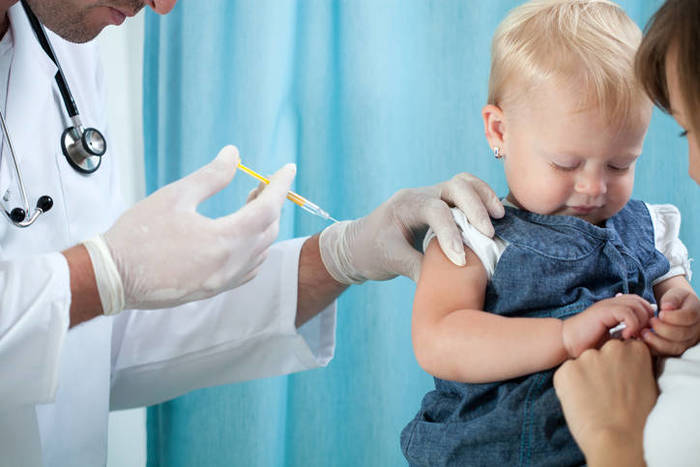
Other general rules for preventing lymphadenitis include:
- immune support;
- avoiding hypothermia;
- timely vaccination against major infectious diseases;
- avoiding the occurrence of wounds and microtraumas of the skin;
- maintaining personal hygiene;
- timely sanitation of the oral cavity;
- regular medical examination.
Drug therapy
First of all, treatment of inflamed lymph nodes is carried out using drug therapy. If it is chosen effectively, the problem can be eliminated in 2-3 weeks. Complicated or advanced diseases lead to longer treatment. The duration is also influenced by the cause of inflammation. For enlarged lymph nodes the following can be used:
- Arbidol, Acyclovir or Amiksin - used to fight viruses;
- Amoxiclav or Ampicillin - used for diseases caused by bacteria;
- Anaferon for children, Aflubin or echinacea preparations are drugs included in the group of immunomodulators;
- Paracetamol or Nurofen - help fight inflammation;
- L-cet or Fenistil are included in the category of antihistamines.
The duration of a course of antibiotics is usually 10-14 days. Victory over the underlying disease leads to the fact that the lymph nodes return to normal.
Anti-inflammatory drugs may be prescribed in addition to or separately from antibiotics. They are able to stop the course of the inflammatory process, which provoked an increase in the size of the lymph nodes in the back of the head. The drugs are prescribed in a course. It usually takes several days for symptoms to resolve.
Sometimes multivitamin complexes are prescribed. They help strengthen the immune system, which subsequently leads to a reduction in inflammation. Vitamins and microelements can improve the child’s well-being and speed up his recovery. Typically, long-term use of multivitamin complexes is required to achieve the effect. To strengthen the child’s immunity and improve the general condition of the body, it is worth using the drugs for 1-2 months.
Treatment methods for inflammation of the lymph nodes on the head
The choice of treatment for inflamed lymph nodes on the head and neck depends on the disease that provoked lymphadenitis and is aimed at eliminating it. Often, complex treatment involves the use of antibacterial, antiviral or anti-inflammatory drugs.
Medications
Antibacterial agents are prescribed when the cause of inflammation of the lymph nodes is serious infectious diseases.
The most effective are:
- Penicillin antibiotics. Used for staphylococcal and streptococcal infections. These include: Ospamox - a drug in the form of powder for suspensions that has a bactericidal effect, is a 4-hydroxyl analogue of ampicillin. A single dose for adults is 250-500 mg, depending on the severity of the disease. The interval between doses is at least 8 hours. Cost: from 60 rub.
- Flemoxin Salutab is a broad-spectrum oral antibiotic. The dosage regimen is individual and is 250-500 mg at a time. The duration and frequency of administration depends on the complexity of the disease. Cost: from 250 rub.
- Augmentin is a drug in tablet form that is resistant to gram-positive and gram-negative microorganisms. The dosage is prescribed individually. Duration of treatment is from 5 to 14 days. Average price: 140 rub.
- Suprax is a drug in the form of granules for preparing a solution that has a bactericidal effect. Has a wide range of actions. Dosage regimen: 2 times a day, 200 mg. The minimum duration of treatment is 5 days. Price: from 600 rub.
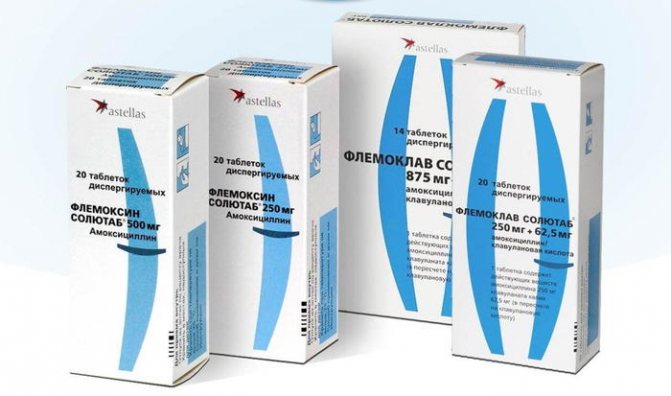
These include: different strains of influenza, Epstein-Barr disease, herpes, measles, chicken pox. The most effective means:
- Isoprinosine is a drug that has immunostimulating and nonspecific antiviral effects. Recommended dose: 50 mg in 3 divided doses. Duration of treatment: 5-14 days. Cost of the drug: from 550 rubles.
- Arbidol is an antiviral agent in capsule form used in the treatment of influenza, chronic bronchitis and pneumonia. Recommended dose: 1 capsule twice a day. Duration of treatment: 5-7 days. Average price: from 200 rub.
- Amiksin is an interferon inducer intended for the treatment of herpes infections, influenza and ARVI. Dosage regimen: 125 mg once a week for 6 weeks. Cost: from 550 rub.
Anti-inflammatory drugs act directly on the inflamed lymph nodes.
Divided into:
- non-steroidal;
- painkillers;
- glucorticoids.
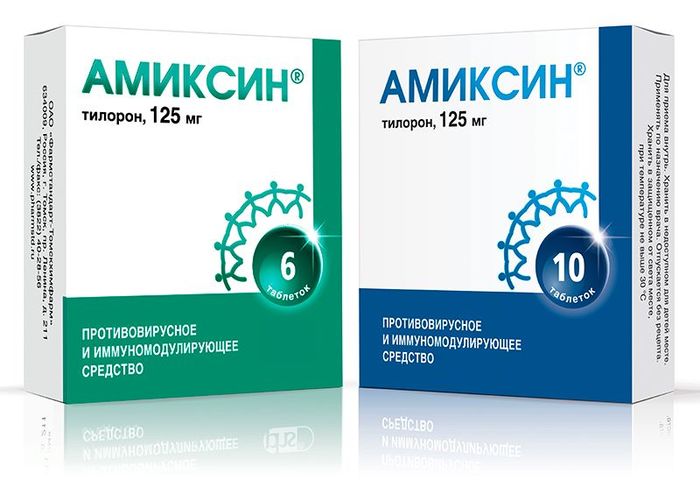
Non-steroidal drugs slow down the formation of inflammatory components, reduce swelling, pain and redness. Nimesil is an effective non-steroidal drug. Presented in the form of granules for the preparation of suspensions and intended for symptomatic therapy.
Apply 2 times a day, 1 sachet. The maximum duration of treatment is 15 days. Average price: 300 rub. for 9 sachets. Drugs from the glucorticoid group relieve swelling, pain and discomfort due to inflammation of the lymph nodes.
These include:
- Dexamethasone is an injection solution that has an anti-inflammatory effect. The dosage regimen and duration of administration are determined individually. You can administer from 4 to 20 mg of the drug 3-4 times per day. Price: from 105 rub.
- Hydrocortisone is an oral medication. The dose of the drug is selected by the doctor individually. In most cases, tablets are taken once a day in the morning between 6 and 8 am. Cost: about 100 rubles.
Traditional methods
Lymph nodes on the head, the location of which is associated with large vessels in the body, can be treated using folk remedies in case of inflammation. The use of folk recipes is an auxiliary component in complex treatment.

The most effective are considered:
- Tincture of chamomile and calendula for inflammation of the submandibular lymph nodes. 1 tbsp. l. dry flowers, pour 200 ml of boiling water, leave for 1 hour. Use as a rinse 3-5 times a day.
- A decoction of pine needles for inflammation of all groups of lymph nodes on the head and neck. 2 tbsp. l. pour 300 ml of water into pine needle shoots. Place over low heat and simmer for 10 minutes. Infuse the decoction for 1 hour. Take 50 ml 3 times a day with the addition of honey.
- Tincture of aloe leaves. Take enough plant to produce 100 ml of juice, rinse, chop and squeeze out the juice. Mix the resulting liquid with 1 tbsp. l. honey and 300 ml of homemade dry red wine. Leave the resulting solution in a cool place for 3 days. Take 1 tbsp. l. 3 times a day.
- Echinacea decoction. Take 3 tbsp. l. dried echinacea root and add 400 ml of water. Boil over low heat for 15 minutes. Remove the solution from the heat and add 50 g of fresh peppermint. Cool and strain, add 3 tbsp. l. honey Take 30 ml of decoction 3 times a day.
Other methods
Physiotherapeutic procedures play an important role in the treatment of inflammation of the lymph nodes, which include:
- electrophoresis with drugs;
- ultra-high frequency therapy (UHF therapy)
- galvanization;
- laser therapy.
Physiotherapy allows you to quickly penetrate the source of inflammation and optimize the outflow of lymph.
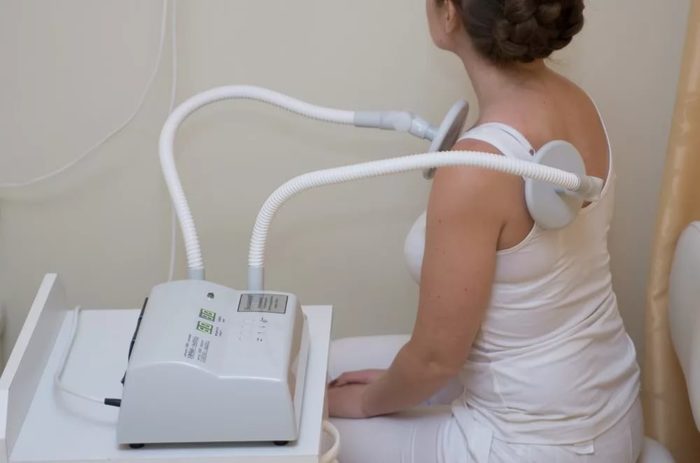
Despite the effectiveness of the method, there are contraindications to its use:
- presence of a tumor;
- tuberculosis;
- elevated temperature;
- signs of intoxication of the body.
Lymph nodes on the head, the location of which determines their classification, when inflamed, respond well to treatment with electrophoresis. The method involves applying constant electrical impulses to achieve a local effect. In this case, various preparations are used, through which a galvanic current passes and transfers them to the tissues. Average cost of the method: 600 rubles.
With UHF therapy, under the influence of electromagnetic waves, inflammatory processes stop through structural changes in tissues. Price of the procedure in clinics: from 450 to 600 rubles. When using laser therapy, blood flow improves in the area of influence, due to which molecular oxygen and nutrients are supplied to damaged tissues.
This leads to a reduction in swelling, inflammation and pain. During the procedure, the patient is exposed to light waves. Cost of the method: from 850 rubles. The galvanization method involves simultaneously exposing the affected area to current and low voltage.
This helps to launch various biochemical processes in tissues, which leads to improved blood circulation and reduced pain. Surgical intervention is indicated for purulent lymphadenitis, when opening of a purulent focus is required to prevent further spread of infection.
